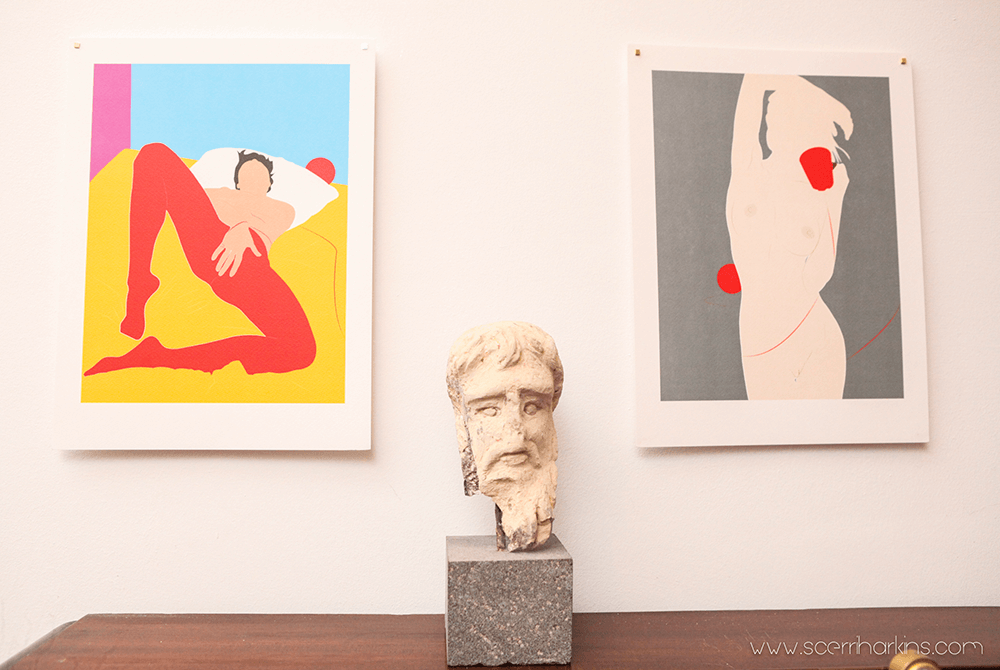
Scroll down for the English version
Ħsieb ħafif dwar l-installazzjoni “Siġġu” tal-ħabib tiegħi Austin Camilleri. Punt li fl-istess ħin jiddispjaċini nagħmel għax trid tkun idjota biex ma tasalx għalih waħdek. Biss indunajt li l-ovvju kultant mhux.
Nibda bil-premessa li dan it-tip ta’ intervent minn naħa ta’ Austin diġa’ rajnieh f’LE . IVA | ANGER IS A LAZY FORM OF GRIEF. Din id-darba l-artist ħeba lir-reġina permezz tas-siġġu u mhux b’intervent diġitali. Ta’ min jinnota iżda li huwa biss frott id-dokumentazzjoni fotografika ipperpetwa mill-artist li l-intervent ta’ “eklissi” qiegħed iseħħ. L-istess għamlu fotografi varji sabiex jitfgħu l-ħatab fuq in-nar tad-diskussjoni. Biss iż-żewġ elementi jinsabu f’posthom hemm fil-pjazza, wieħed b’mod permanenti u l-ieħor b’mod temporanju, distanti minn xulxin. L-ebda krejn ma mar jiddisturba lis-sua maesta mit-tron, kif jixhed dan ir-ritratt li skonti huwa l-iktar interessanti, tal-ex kollega Matthew Mirabelli.
F’eklissi, il-fotografi fuq id-Dinja jiċċelebraw il-mument temporanju ħafna meta pjaneta taħbi oħra għal ftit mumenti, iżda fil-verità l-ebda pjaneta ma tiekol oħra. Hija l-prospettiva tal-osservatur li tiddetermina d-dinamika tar-rakkont. U dak huwa l-argument madwar dan l-intervent: l-eklissi ta’ moħħ poplu, li nittama m’huwiex intervent permanenti.
Ħasra biss li dan ix-xogħol sar b’rabta ma’ kontenitur artistiku iffinanzjat mill-istat. Rabta li r-reputazzjoni ta’ Austin tista’ tgħaddi mingħajr – għal raġunijiet ovvji.
The eclipse of a people
Reflecting on my friend Austin Camilleri’s “Siġġu” installation in a casual manner, I feel compelled to address a seemingly self-evident point. Expressing this with some hesitation, it becomes apparent that one would need to deliberately ignore the obvious to overlook it.
I start with the premise that this kind of intervention on the part of Austin has already been seen in LE . IVA | ANGER IS A LAZY FORM OF GRIEF. This time the artist hid the queen through the physical installation of ‘Siġġu’ and not through any digital intervention. Notably, it is through the artist’s photographic documentation that the occurrence of an “eclipse” in the intervention becomes evident. This intentional choice has been replicated, analogous to photographers adding fuel to a discussion to provoke further conversations. However, in the square, both elements coexist, one permanently and the other temporarily, maintaining a distance without disruptive interference. No crane was used to disturb her majesty. Remarkably, the photograph by former colleague Matthew Mirabelli captures this dynamic intriguingly, a job well done particularly for those who may be less observant.
Drawing a parallel to an eclipse, where planets momentarily conceal each other without actual consumption, the analogy extends to the observer shaping the narrative. The discourse surrounding this intervention centers on the temporary eclipse of people’s minds, with the hope that it remains a fleeting phenomenon.
My only lament is that Austin’s well-established reputation could easily withstand any association with an art container that the state is funding – for the obvious reasons.


























